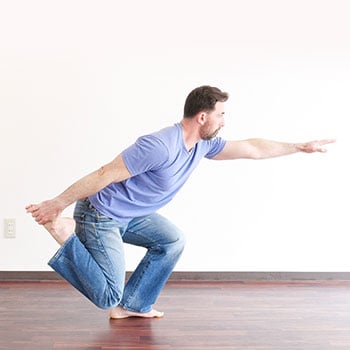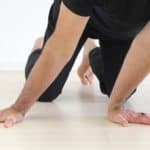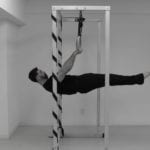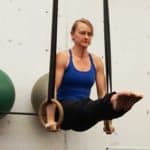There are a lot of factors that contribute to your success or failure with the rings – core strength, upper body strength, lower body strength (okay, you get the point – you have to be wicked strong to get really good at the rings).
One factor that gets overlooked all too often, though, is how you hold the rings.
It probably sounds trivial, right? Who the hell cares what position your hands are in, as long as you can hold yourself up and maintain some semblance of stability?
Believe it or not, it makes a much bigger difference than you’d think.
There are three fundamental grips you should be aware of and comfortable with as you entrench yourself in rings practice. They are:
- Neutral grip (below the rings)
- False grip
- Above the rings grip
And of course, it stands to reasons that you’l want to start with a comfortable and high-quality set of rings.
In this post, I’ll describe each of these grips to show you how to master them and when each is appropriate.
The 3 Fundamental Ring Grips
It may seem like a small detail in the grand scheme of things, but the way you grip the rings does make a difference in your practice.
It all comes down to being able to perform the movements properly, and something as simple as the angle of your wrist can have a huge impact on your form. If the angle of the wrist is off, over time you could develop wrist damage, poor rings performance, and even injuries from falling off the rings.
The three most important grips are as follows:
Neutral Grip – Below the Rings
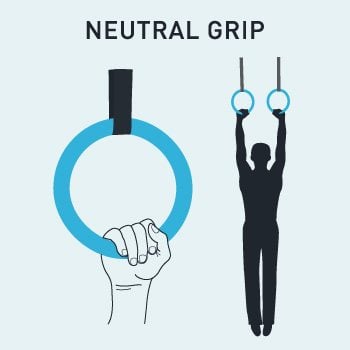 The neutral grip is best for pulling movements, and can be implemented either with the rings facing each other, or with the rings side-by-side, facing outward.
The neutral grip is best for pulling movements, and can be implemented either with the rings facing each other, or with the rings side-by-side, facing outward.
Here are some tips for the neutral grip:
- In this position, most of the pressure should be placed on the upper portion of your palms, right below your first knuckles.
- Wrap your fingers around the rings, with your thumb wrapped around the rings as well.
- Get below the rings and, while placing pressure on the rings with your hands in this position, you can perform pulling movements.
- Make sure to keep your fingers and thumbs in the correct position, and not to flex the wrist.
False Grip
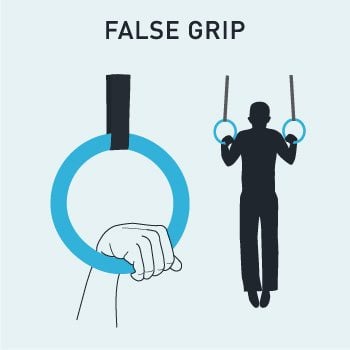 The false grip is used for moves like the muscle up.
The false grip is used for moves like the muscle up.
Here are some pointers for proper positioning with the false grip:
- Place the rings further into your palms than you did with the neutral grip – around mid-palm level.
- Wrap your fingers around the rings and wrap your thumbs around your knuckles.
- Push down into the rings, creating some pressure.
- Your wrists should be bent, but not so far that your wrist is inside the rings.
- When performing the muscle up in particular, make sure to maintain the false grip, with the rings turned out, throughout the movement – from below the rings, all the way to the above the rings position.
Above the Rings Grip
 This grip is used for holds like the top position hold.
This grip is used for holds like the top position hold.
Here are some key points to keep in mind:
- Keeping your wrists as straight as possible, push down into the rings to lift your body.
- Do not squeeze the rings as hard as you can – it’s not necessary.
- Hold your arms by your sides, making sure not to bend your wrists to the inside or the outside of the rings.
A great example of why the grip you use makes a difference is the top position hold. If you bend your wrists too much, there will be too much pressure placed on the wrist.
This will make it impossible to push down into the rings as much as you should. Over time, this will lead to wrist pain.
Practice Makes Perfect
All of these grips, especially the false grip, take time to master.
The most important thing is that you keep practicing and working on your grips, so that you can have the most productive and safe rings practice.
If wrist soreness is an issue for you, our wrist routine can help.
Build Practical Strength & Stability with Gymnastic Rings
Rings are one of our favorite tools for building useful strength, and we designed Integral Strength to leverage them alongside full-body calisthenics for the best combination of solid, head-to-toe stability.

